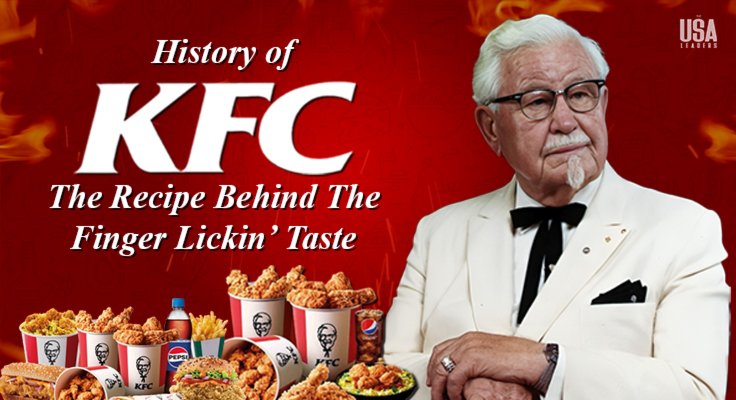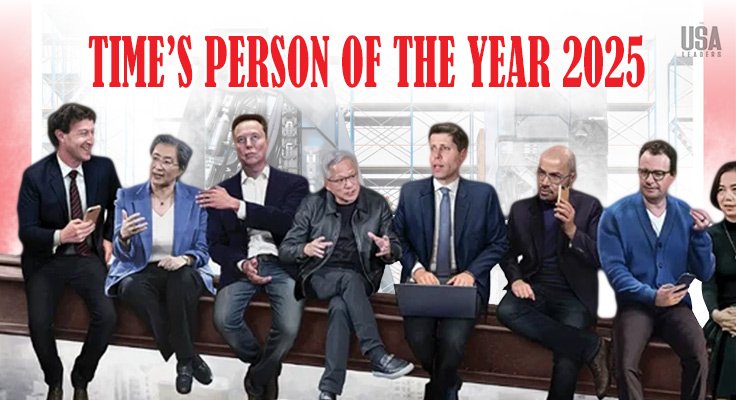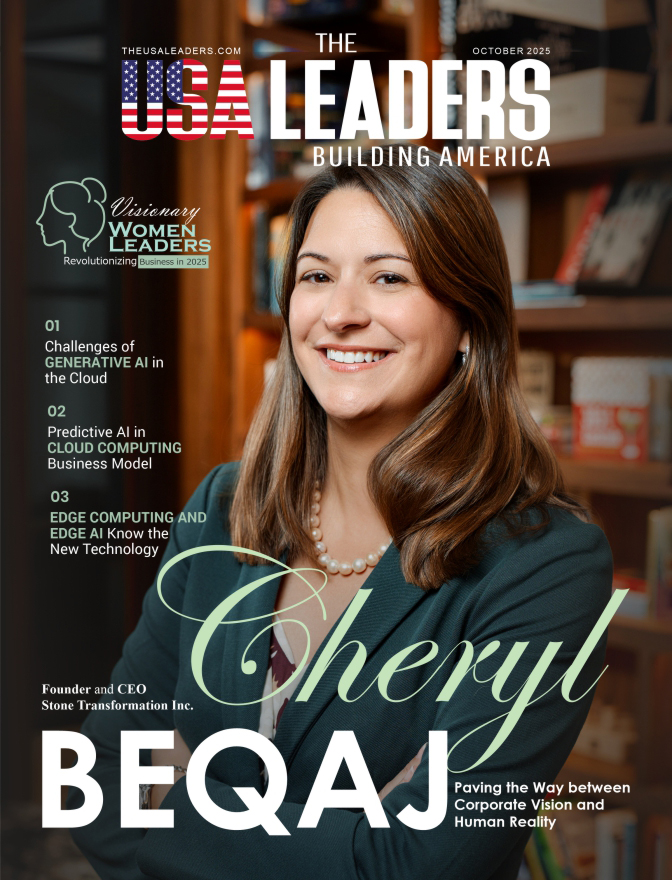Do you know where the first vegetarian KFC in the world is? If you think it’s in Asia, where vegetarianism is widely practiced, you’re in for a surprise. The answer is actually “The Land of Windmills”—the Netherlands. But why did KFC make this surprising move? And more importantly, how did KFC, a brand known for its fried chicken, reach a point where they could make such bold decisions in their global expansion? What are the roots of this global icon? In this blog, we’ll dive into the rich history of KFC and uncover the journey that led them to this remarkable position.
History of KFC: Crafting the Secret Recipe
Do you know the story behind KFC? If not, you’re in for a treat. It all started with Colonel Harland Sanders, a self-taught chef who dabbled in various jobs like a railroad fireman and ferryboat operator. But his true passion? Cooking. In 1930, in Corbin, Kentucky, Sanders turned a simple roadside diner into something much bigger—a motel restaurant that became the birthplace of KFC. His secret fried chicken recipe? It was the star of the show.
But how did he get the ball rolling? Sanders took a bold step by selling his motel and restaurant in Corbin, using the funds to promote his chicken recipe. He kickstarted his journey with just $105 from his first Social Security check, a modest amount that fueled a massive dream. By 1952, the first KFC franchise opened in Salt Lake City, Utah. Was it all smooth sailing? Not exactly. Sanders had to hustle, traveling far and wide to help franchisees get their restaurants up and running, all while making sure they followed his recipe to the letter. But hey, who said building a fried chicken empire would be easy? The history of KFC is a testament to Colonel Sanders’ relentless pursuit of his dream.
Rising to Global Fame
Ever wondered how KFC became a global sensation? It is a story of savvy expansion and strategic milestones. The history of KFC and its rise to international fame began with the opening of its first international restaurant in Canada in 1964. This was a pivotal moment, setting the stage for a bold global expansion.
By the 1970s, KFC was aggressively venturing into Europe, Asia, and Latin America. In the 1980s, it solidified its status as a global brand with a presence in nearly every country. Today, KFC boasts over 30,000 outlets across 150 countries and territories. China, its largest market, features 5,600 outlets. Other key markets include Japan, Malaysia, South Africa, and the United Kingdom.
The history of KFC expansion strategy relied heavily on careful location selection. The company focused on high-potential areas with growing urban populations and strong demand for fast food. By tailoring its menu to local tastes and leveraging franchising, KFC managed to thrive in diverse markets worldwide. So, the next time you savor that crispy chicken, remember that it is more than just a meal—it is a testament to KFC’s impressive global journey.
Branding the Bucket
KFC’s logo has seen a fascinating evolution, mirroring the brand’s journey and changing tastes throughout the history of KFC. In the 1950s, the original logo featured Colonel Sanders with a chef’s hat and the words “Colonel Sanders’ Kentucky Fried Chicken.” This classic design emphasized the Colonel’s role as the brand’s face.
Fast forward to the 1970s, and KFC simplified its logo to a red and white bucket. This change signaled a shift towards a more straightforward, recognizable symbol. The 1990s brought a modern makeover with a sleek, streamlined design. By 2014, KFC unveiled its current logo, featuring a prominent close-up of the Colonel’s face and the iconic bucket. This contemporary look highlights the brand’s dedication to blending heritage with modern appeal.
As for the slogan, “Finger Lickin’ Good” made its debut in 1956 and quickly became a hallmark of KFC. Trademarked in 1963, this tagline has grown into a global symbol of KFC’s irresistible offerings. It’s more than just a catchy phrase; it’s a testament to the brand’s ability to evoke the joy of savoring every bite, further solidifying its place in the history of KFC.
Cooking Up Marketing Success
KFC’s marketing strategy has been a key driver of its impressive growth. The brand’s creativity shines through with memorable campaigns featuring Colonel Sanders and recent collaborations with celebrities like Shaq and Mario Lopez. KFC engages customers with limited-time offers and innovative promotions while embracing digital marketing to reach a broader audience, a testament to its rich history of KFC.
KFC’s rapid global expansion, facilitated by its franchising model, is noteworthy. By 1963, just 11 years after the first franchise opened, KFC had established 600 restaurants in the U.S. and Canada. Today, the brand operates over 25,000 locations in 145 countries, marking it as one of the largest fast-food chains worldwide. This growth is deeply rooted in the history of KFC, showcasing its remarkable journey.
What truly sets KFC apart is its ability to adapt to diverse markets. For example, in India, the menu features a spicy Zinger burger, while in Japan, you can enjoy shrimp burgers and fried chicken skins. This localization strategy ensures KFC resonates with various cultural tastes and dietary preferences.
The iconic “It’s Finger Lickin’ Good” slogan and the enduring image of Colonel Sanders has made KFC’s branding both memorable and effective. Although McDonald’s boasts more locations globally and a higher market capitalization of $200 billion compared to KFC’s parent company Yum! Brands at $35 billion, KFC’s strategic presence in key markets like China highlights its successful global approach, building on the rich history of KFC.
Perfecting the Flavor Profile
KFC’s signature style revolves around its secret recipe, a meticulously guarded blend of 11 herbs and spices created by Colonel Sanders. This distinctive recipe has been a cornerstone of KFC’s enduring success and is a significant part of the history of KFC. Since the brand’s early days, this unique flavor has set KFC apart from competitors, providing a consistently delicious and recognizable taste that customers continue to love.
At first, KFC’s menu was all about the original fried chicken. However, as tastes and preferences evolved, so did KFC. Over the years, the menu has grown to include a broad range of items. Today, you’ll find chicken sandwiches, burgers, salads, and even desserts. This expansion shows KFC’s commitment to adapting to varied consumer preferences while still honoring the core of its original recipe—a key aspect in the history of KFC.
Moreover, the introduction of new items like chicken tenders, wings, and vegetarian options in select markets highlights KFC’s flexibility. This ability to innovate ensures that KFC stays relevant and appealing in a changing food landscape. Despite these modern additions, the original fried chicken remains central to the brand’s identity. KFC expertly balances innovation with tradition. It keeps the unique essence that has made it a global favorite. Meanwhile, the company embraces new trends to meet evolving customer tastes. This combination helps KFC stay relevant and beloved worldwide.
The Veggie Twist in The Netherlands
In March 2020, KFC made waves in the Netherlands by launching vegetarian meals during the Week Without Meat, which ran from March 9 to March 15. This strategic initiative was part of a larger movement promoting plant-based eating and raising awareness about the environmental and health impacts of meat consumption. The timing was no coincidence; KFC recognized a growing demand for healthier and more sustainable food choices among Dutch consumers, marking a notable chapter in the history of KFC.
KFC’s approach was nothing short of pioneering. The Rotterdam location went entirely meat-free for the week, swapping all chicken items with vegetarian alternatives made from Quorn products. This bold move marked a “historic moment” for KFC, a brand synonymous with chicken, demonstrating its adaptability in response to shifting consumer preferences and adding another milestone to the history of KFC.
The consumer demand driving this initiative was significant. Surveys indicated that nearly 9 million Dutch people—almost half the population—considered meat consumption outdated. This reflected a broader trend towards plant-based diets, pushing KFC to test the waters. The test of the Chickenless Chicken Burger in Amsterdam proved successful, accounting for 10% of orders during the trial week. This success validated the strong market demand for vegetarian options and further enriched the history of KFC as a brand willing to evolve with the times.
Encouraged by this response, KFC made the Chickenless Chicken Burger a permanent menu item across all its Dutch locations starting on March 9, 2020. This move catered to the expanding flexitarian and vegetarian market segments while preserving KFC’s signature flavors. It is also aligned with broader industry trends. For example, other fast-food giants like McDonald’s and Burger King quickly followed suit. They introduced their own plant-based options. This move aimed to meet the evolving preferences of health-conscious consumers.
Leaving a Legacy in Every Bite
KFC’s influence on the fast-food industry is undeniable. They didn’t just popularize fried chicken; they also redefined how fast food is served globally. By pioneering the franchise model, KFC set the gold standard that many other fast-food chains now follow. Their focus on standardization, branding, and customer experience created a template for the industry.
However, KFC’s impact goes beyond just the food. Their cultural influence is massive, with Colonel Sanders’ image becoming a global icon. KFC wasn’t just another Western brand entering new markets; it was a cultural phenomenon. In China, for instance, KFC wasn’t just selling chicken; it was introducing a new way of dining that resonated deeply with local tastes.
The history of KFC is a testament to the brand’s ability to adapt to local cultures while maintaining its core identity. KFC’s presence worldwide has made it not just a fast-food giant but a cultural touchstone that continues to shape culinary trends across the globe.
History of KFC: The Last Piece
KFC’s journey has been nothing short of iconic. From a single restaurant to over 30,000 locations worldwide, it’s clear that the history of KFC has left a lasting legacy in the fast-food industry. Its blend of secret herbs and spices continues to captivate taste buds globally. With such a strong foundation, the future looks bright for KFC as it innovates and expands further. So, whether you’re craving fried chicken or curious about its journey, KFC remains a name you can’t ignore. Keep an eye on what’s next!






















